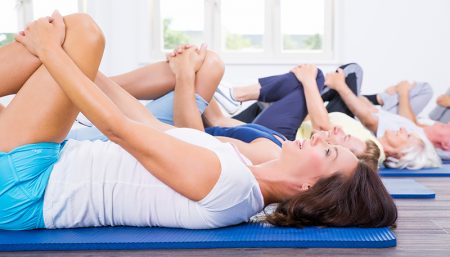
Cystic fibrosis (CF) is a genetic disorder that affects mostly the lungs, but also the pancreas, liver, kidneys, and intestine. It is caused by the presence of mutations in both copies of the gene for the cystic fibrosis transmembrane conductance regulator (CFTR) protein.
Long-term issues include difficulty breathing and coughing up mucus as a result of frequent lung infections.
Signs and symptoms may include sinus infections, poor growth, fatty stool, clubbing of the fingers and toes, and infertility in most males. Different people may have different degrees of symptoms.
There is currently no cure for the disease and due to the abnormally high production of thick and sticky mucus, patients are more likely to grow bacteria and develop infections.
Before Getting Started

If you are seeking guidance from a therapist then before starting off ask for specific programming recommendations.
- Take all medications as recommended by your physician.
- Chalk out the goals of your program – increase cardiovascular fitness, facilitate mucus clearance, and improve your ability to perform activities of daily living.
- Choose activities that you enjoy such as walking, cycling, rowing and swimming and work up to a moderate intensity.
- Start slowly and gradually increase the intensity and duration of your workouts. You may need to start with five- to 10-minute sessions and build up to 30-minute sessions, three or more days per week.

- Two days per week do three 10-repetition sets of light-resistance strength-training exercises targeting all the major muscle groups. Use the Ratings of Perceived Exertion and dyspnea scales as well as heart rate to measure your intensity, and adjust your workouts according to fluctuations in your symptoms.
Exercise Benefits for CF Patients
Exercise benefits us all, but people with CF benefit even more from being physically active because exercise can:
- Slow the rate of decline in lung function, which means children with CF may keep good lung function longer.
- Help clear mucus from the lungs, allowing for easier breathing.
- Create more reserve for the whole body to rely on, during periods of lung infection. Someone who is fit will be able to resume activity faster following a bout of illness.

- Improved Quality of Life. Improved mood and sleep, which is important for someone with a life-limiting condition.
Being more active can slow down the decline in lung health, strengthen your heart and muscles, and make you feel better about yourself.
Exercise Suggestions
Knowing which exercises will best treat your CF is very helpful. The following are different types of exercise:

- Endurance: Activities done for extended periods. These make everyday tasks easier.
- Chest mobility: Activities done to loosen up the chest cavity. These make it easier to breathe.
- Core strengthening: Activities using muscles of the abdominal (belly) wall for improved posture and breathing.
- Leg strengthening: Activities using leg muscles. These make everyday tasks easier to perform.
- Breathing exercises: Activities done to stretch the lungs. These make breathing feel easier.
Avoid extreme weather conditions like prolonged exercise in the heat that may increase the need for fluids and dietarysalt.
References:
Disclaimer
The Content is not intended to be a substitute for professional medical advice, diagnosis, or treatment. Always seek the advice of your physician or other qualified health provider with any questions you may have regarding a medical condition.



